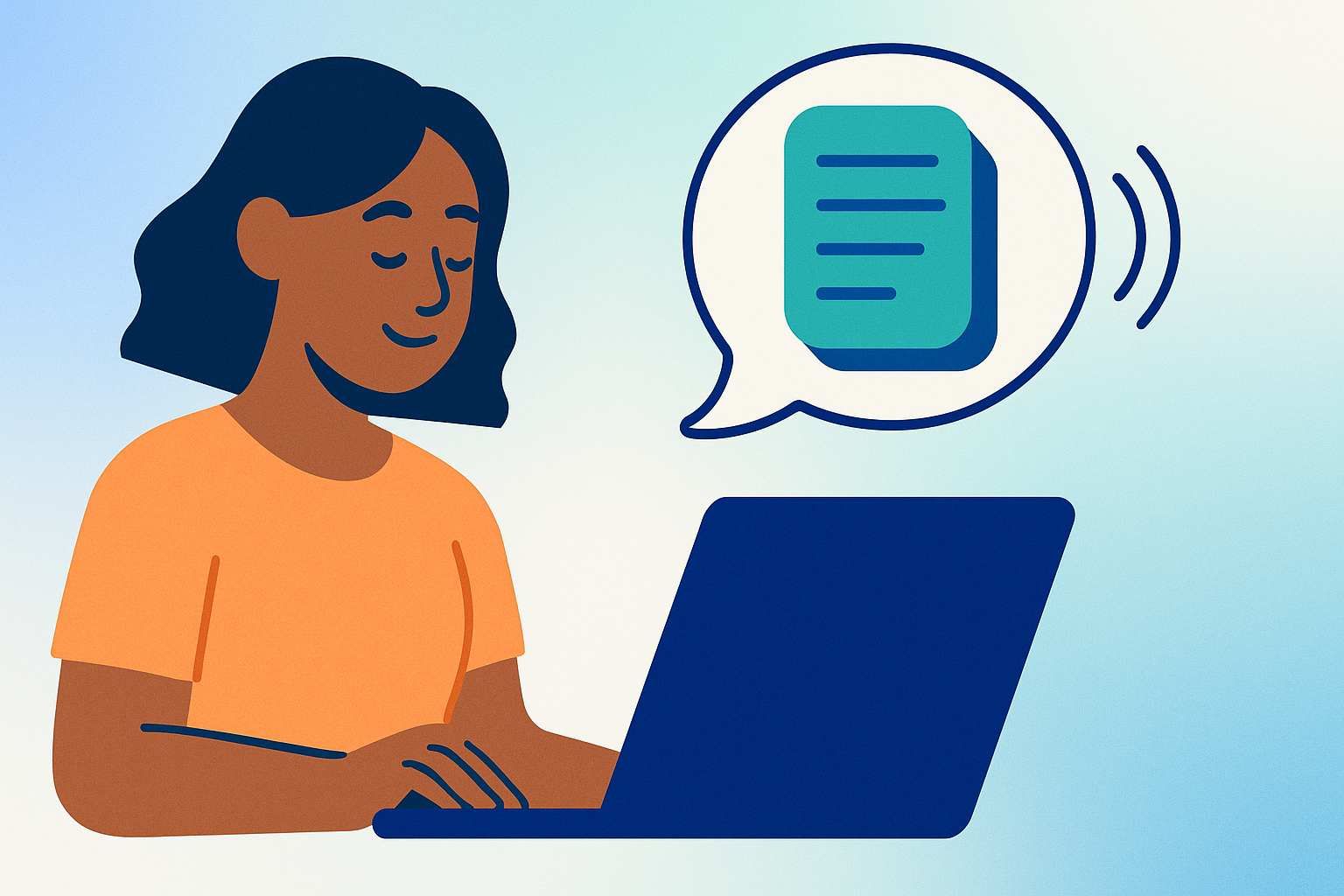


Text-to-Speech (TTS) software, also known as speech synthesis technology, converts written text into spoken words using digital voices. This accommodation supports individuals with reading difficulties, visual impairments, or learning disabilities by providing audio versions of written content. TTS tools can be integrated into computers, smartphones, and tablets, making information more accessible and reducing eye strain. Common synonyms include "voice output software" and "screen reader," though TTS specifically focuses on reading text aloud. By transforming text into speech, this software promotes independence and improves comprehension for users who benefit from auditory learning or need alternative ways to access written materials.
Begin by selecting TTS software compatible with your device and install it following the provider’s instructions. Customize voice speed, pitch, and language settings to suit your preferences. Use keyboard shortcuts or menu options to activate reading features when viewing documents or web pages. Regularly update the software to access new voices and improved functionality. Pair TTS with headphones in shared spaces to maintain focus and minimize distractions. Periodically review settings to adapt to changing needs or environments.
Disclo streamlines requests, documentation, and tracking for Text-to-Speech (TTS) Software, so HR teams and employees spend less time on paperwork and more time working productively.
